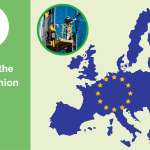Addressing the social dimension of climate action is no longer optional. By aligning climate, energy and social policies more effectively, the EU can pave the way for a fair and just transition that benefits all citizens, leaving no one behind. The briefing “Do final NECPs sufficiently address EU-level just transition requirements?” highlights the urgent need for a fundamental shift in how Member States approach just transition in the National Energy and Climate Plans (NECPs) process, especially through putting equity, affordability, and inclusion at its core.
Every five years, Member States of the European Union must submit updated National Energy and Climate Plans to the European Commission.The plans are key tools to ensure that national efforts contribute to achieve the EU’s energy and climate goals through detailed policies and measures.
The NECPs drafting and actualisation process is also an opportunity to plan for just transition – following EU requirements – and safeguards for the most vulnerable, from small businesses to communities and households at risk of energy poverty.
Role and potential of NECPs for a just transition
The EU regulation on the Governance of the Energy Union and Climate Action (2018/1999) mandates Member States to assess the socio-economic impacts of the planned measures and to ensure consistency with other EU requirements addressing the social impacts of the transition, such as the Just Transition Fund (JTF) and the Social Climate Fund (SCF) regulations. This means that, by law, just transition processes and measures should be reflected in the NECPs to mitigate expected socio-economic consequences in most affected territories.
Furthermore, the national level of energy poverty should be assessed, also to lay the ground for strong National Social Climate Plans (NSCPs), which are due by 30 June 2025. In addition, such an assessment should address social impacts associated with the new emissions trading system on road transport and heating (ETS 2) on vulnerable households.
As such, the NECPs are not just tools for shaping climate and energy policy, but must also incorporate just transition considerations in line with EU regulations.
Many countries yet seem to be overlooking the opportunities that NECPs can offer to plan for a just transition in an integrated manner. Most of the Member States missed the NECPs submission deadline set for June 2024 and failed to include the citizens in the drafting process. The submissions of final plans from Belgium, Estonia and Poland are still pending at the date of publication of this text.
State of play: EU-level just transition requirements
Most of the assessed plans fail to take an integrated approach, lacking a systemic strategy to meet just transition requirements outlined in EU regulation. The briefing sheds light on several shortcomings that need to be addressed. The socio-economic impact assessments of the climate and energy transition are generally incomplete, with only a third of NECPs evaluating the effects of additional policies against existing measures. Vulnerability factors are often viewed primarily from a geographic perspective, focusing mainly on just transition regions.
Furthermore, less than half of the NECPs outline policies to maximise social and environmental benefits or mitigate negative impacts, and most adopt a fragmented approach that lacks coherence with Territorial Just Transition Plans. Additionally, only a third of NECPs address reskilling needs comprehensively.
In addition, they also demonstrate little preparation for the introduction of ETS 2, with only a third of NECPs including energy poverty assessments and mitigation targets. Only a few plans indicate how the Social Climate Fund will be used to alleviate energy and transport poverty.
The briefing also notes significant disparities in how Member States address just transition aspects, raising concerns about uneven social impacts across the EU. Slovenia, France, Portugal, and Spain have made the most progress in integrating just transition considerations, whereas Hungary, Czechia, and Bulgaria considerably lag behind on most indicators. Stronger EU-level guidance and enforcement are needed to ensure that social justice is embedded in national decarbonisation strategies across the Union.
These findings are part of the TogetherFor1.5 Consortium’s briefing on how far ten of the final NECPs reflect the EU-level just transition requirements. In this briefing, the Consortium assesses whether (i) socio-economic impacts analyses were conducted, (ii) if policies and measures to address social and employment impacts are included and whether (iii) the NECPs appropriately laid the ground for the NSCPs.
The way ahead: civil society’s recommendations
Member States should treat NECPs as a strategic planning tool rather than a mere reporting exercise, ensuring adequate resources and time for integration into national policy-making. National governments must also meaningfully engage relevant ministries, authorities, stakeholders and the public early in the process to build and align just transition measures with socio-economic needs and practicalities.
The EU should improve the alignment of reporting requirements and timelines to enable more integrated planning between just transition and climate-related policies. Additionally, policymakers must enhance monitoring and enforcement mechanisms to improve Member States’ compliance with just transition requirements under EU regulations while providing technical assistance and capacity-building support to help Member States address administrative and expertise gaps.



